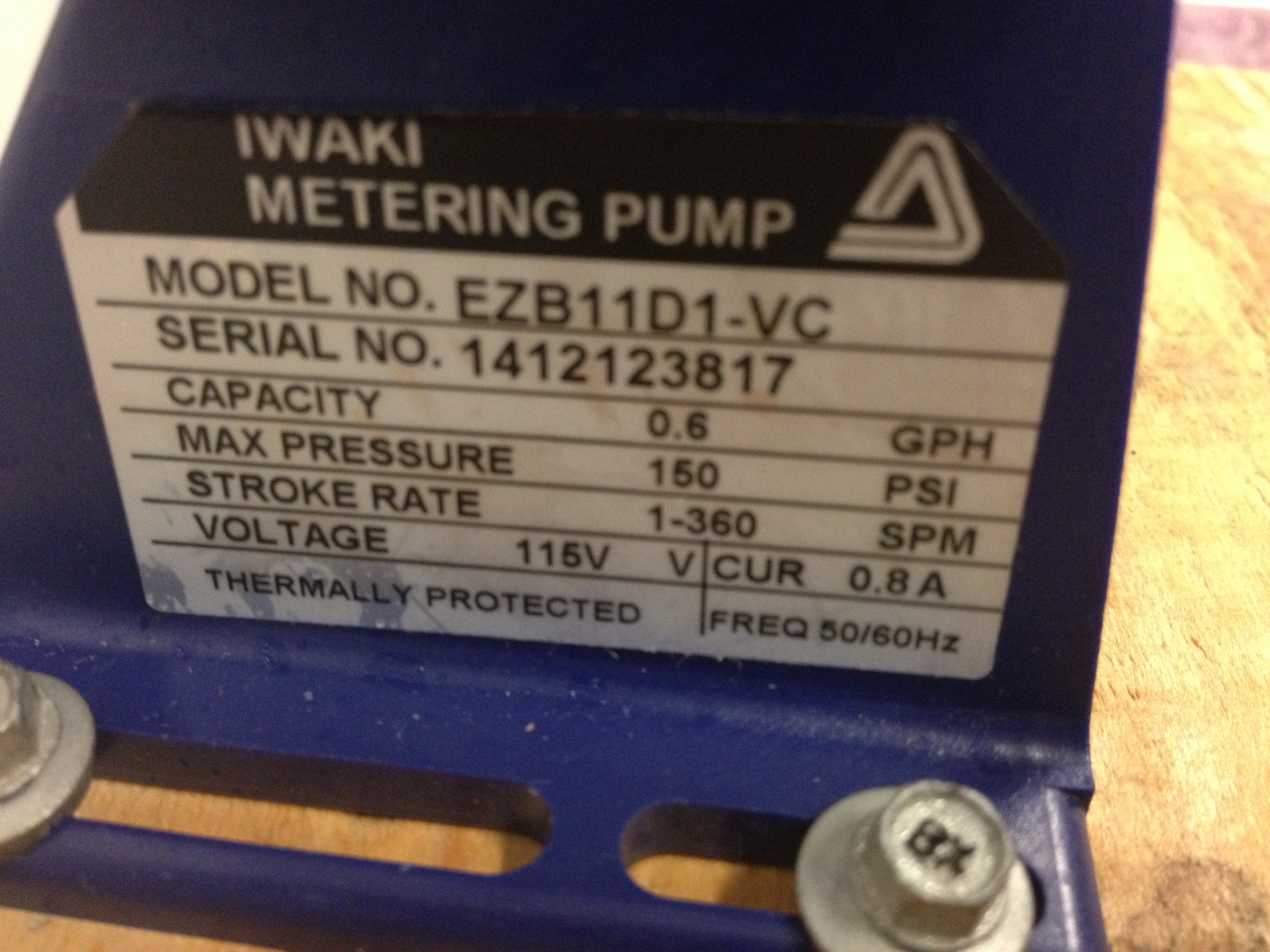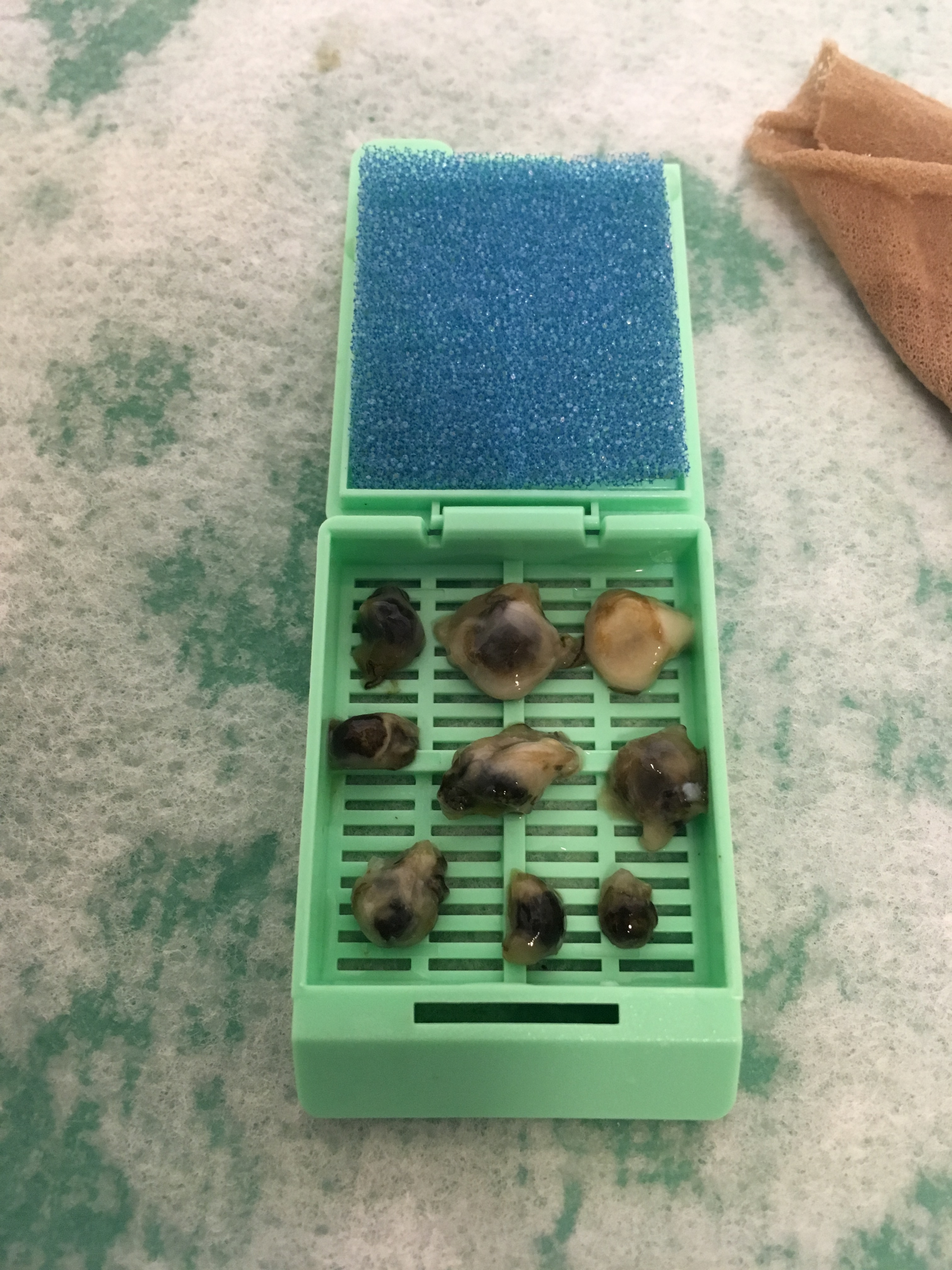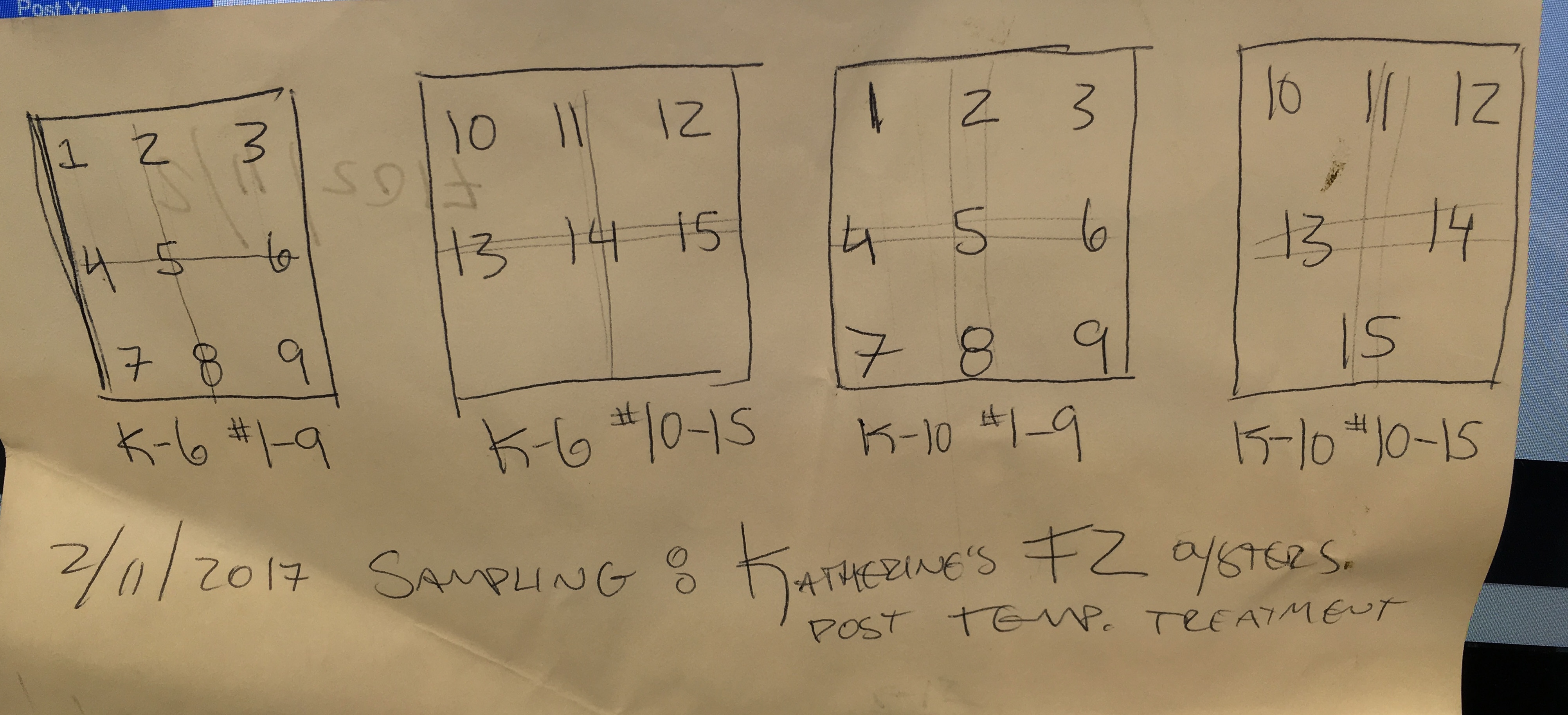OA Prep, devil's in the details
Spent the day @ Manchester making the final (hopefully) touches to OA system. Also sampled the F2 population (Katherine’s). Here’s a breakdown:
Header Tanks:
- Header 2, which was supposed to be ambient, was consistently reading ~7.5. This is too low, since ambient in other tanks have been reading 7.78. I disconnected the CO2 tube from the manchurian injector, and capped it. I drained the tank 1/2 way, and refilled. pH levelled off to 7.78 by the end of the day in the header (H2).
- After watching the pH in Header 1 since Wednesday, and seeing pH drop to low 6, it was obvious that adjustments were needed to the CO2 injections system. Here’s what I did:
- Drained Header 1 to 1/3 the volume, and refilled
- Lowered pressure in main CO2 line to ~15psi
- Increased the injection frequency from 120 to 180 seconds
- Decreased the injection duration from 0.8 to 0.4 seconds
- Changed set point to 7.38 <-> 7.42; since Ambient is ~7.8, I want a larger difference between treatments
- Note: I noticed water had collected again in H1’s CO2 line. I drained it again; perhaps we need a better sealant on the CO2 connection.
- It’s been ~18hrs since making htese adjustments and pH seems to be hovering around 7.4! Will continue to monitor.
- Reminders:
- Header 1 is connected to Relay 2 for CO2 injection
- Yellow Durafet outputs to the left Honeywell screen, top, as “input pv 1”
- PInk Durafet outputs to the left Honeywell screen, bottom, as “input pv 2”
- Green Durafet ouputs to the right Honeywell screen, bottom, as “input pv 2”
Culture Tanks:
- Drained all tanks, cleaned with Vortex.
- One tank has outflow drain @ bottom; capped that.
- Note: late in the day I saw 2 nicely insulated tanks from last year’s experiment stored in the Warehouse. Let’s use these next time we clean tanks * Labeled tanks: #1-3 = low pH #4-6 = ambient
- Labeled and installed HOBO temperature loggers - one logger per tank.
- Set flow rate on all tanks to 1 Liter/minute. Did not mark valves to replicate this at each cleaning - will do so next time.
Probes
- I had left the prepared Tris floating in a culture tank so that Tris was chilled when I got there. Tris was prepared based on the recipe from Taylor Shellfish (Rhonda), with Salinity of 28.0, which currently is the ambient at Manchester.
- Rinsed Durafet tips with Tris, then placed all in fresh container of Tris and let sit for 20 minutes.
- Took temperature in Tris and used pH Calculator to determine pH:
- Temp = 10.02
- S = 28.0
- pH = 8.56
- Calibrated Durafets: (FYI all temp readings on Durafets were 10.0; looked accurate)
- Yellow Durafet: No re-calibration needed
- Pink Durafet: Adjusted from 8.58 -> 8.56
- Green Durafet: Adjusted from 8.69 -> 8.56
- Calibrated other “mystery” pH Probes via same process as Durafets
- Temp = 11.90
- S = 28.0
- pH = 8.5
- NOTE: Code needed to configure the +GF+ screen is: “up, up, up, down”; to exit configure push “up” & “down” at the same time.
- Installed pH probes to the following locations:
- Yellow: Header 1, the low pH tank (this is called “pH Control” on safsoa site
- Pink: Culture tank #4, ambient
- Green: Culture tank #?, low pH (figure this out on Wed.)
- Mystery pH probe 1: Culture tank #?, ambient (figure this out on Wed.)
- Mystery pH probe 1: Culture tank #?, low pH (figure this out on Wed.)
Installed Algae Dosing Pumps
- Attached dosing pumps to table; cut tubing and installed - one pump per line.
- Soaked components in Vortex for ~1hr, then rinsed and installed
- Here are the specs for the metering/dosing pumps:
Created labels for Olympia Oysters, using the following names: 6 & 10 denote 6degree and 10degree overwintering treatments; pH 8 and 7.5 denote OA treatments, and -A, -B & -C denote replicates in 3 separate tanks.
- SN-6-ph8-A, -B, & -C
- SN-6-ph7.5-A, -B, & -C
- SN-10-ph8-A, -B, & -C
- SN-10-ph7.5-A, -B, & -C
- NF-6-ph8-A, -B, & -C
- NF-6-ph7.5-A, -B, & -C
- NF-10-ph8-A, -B, & -C
- NF-10-ph7.5-A, -B, & -C
- HL-6-ph8-A, -B, & -C
- HL-6-ph7.5-A, -B, & -C
- HL-10-ph8-A, -B, & -C
- HL-10-ph7.5-A, -B, & -C
Sampled the last batch of oysters, Katherine’s F2’s, in an identical fashion as the 2/4/2017 sampling. These guys were much smaller, but I used finer pointed tweezers and a sharper shucking knife, so the dissection was much easier!
K-6 samples #1-9:
And locations of all samples in histology cassettes:
Also moved Yaamini’s Pacific oysters from the outside upwelling tanks to the OA system, but only to the ambient tanks. There are ~60 oysters per tank (182 total)
Written on February 11, 2017



